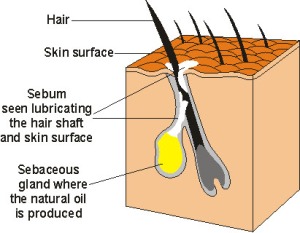There has been a curious report this week in the news about a lady who can smell Parkinson’s disease.
Joy and her husband, Les. Source: HeraldScotland
Some time ago, Mrs Joy Milne from Perth, Scotland noticed a change in the way her husband smelled. It was a more heavy, slightly musky aroma. She thought nothing of it until 6 years later her husband was diagnosed with Parkinson’s disease. Joy discussed her curious ability with some research scientists in Edinburgh and the scientists were so intrigued that they decided to test her.
They recruited six people with Parkinson’s and six people without the disease, and asked them to wear a t-shirt for 24 hours (sleeping in them as well). The scientists then collected the t-shirts, bagged them and coded them, noting down who was who. They then asked Joy to ‘blindly’ smell each shirt and tell them who had Parkinson’s and who didn’t.
Her initial score was 11 out of 12 correct – a rather impressive feat! Joy correctly found all of the six t-shirts worn by people with Parkinson’s, but then she was also adamant that one of the ‘control’ subjects also had Parkinson’s. According to the individual and the doctors running the test, the subject did not have Parkinson’s disease. But then, eight months later, that same subject informed the scientists that he had just been diagnosed with Parkinson’s disease!
It is suspected that Parkinson’s disease may be causing a change in a substance secreted by the skin called ‘sebum’, and scientists at Manchester University are now investigating this. Sebum is an oily/waxy matter, which lubricates and waterproofs the skin and hair of mammals.
Sebum excretion in the skin. Source: Hair Articles
So the question is: how could this be affected by Parkinson’s disease? The answer at the moment is, we have no idea. But recently, there have been a series of reports that suggest that particular forms of alpha synuclein – the protein associated with Parkinson’s disease – are present in the nerves lining the skin in people with Parkinson’s disease (Wang et al, 2013; Donadio et al, 2014; Doppler et al, 2014; Zange et al, 2015). It may be that in appropriate activity in these nerves could be affecting the secretion of sebum.
One final thought – if Joy is capable of smelling Parkinson’s disease, then we should be able to train dogs to do so. Animals are regularly used in the detection of drugs and other chemicals, so why not take advantage of their superior olfactory abilities?


I recently came across a really interesting write up of this tale on the Scientific American website: https://www.scientificamerican.com/article/one-woman-s-ability-to-sniff-out-parkinson-s-offers-hope-to-sufferers/
LikeLike